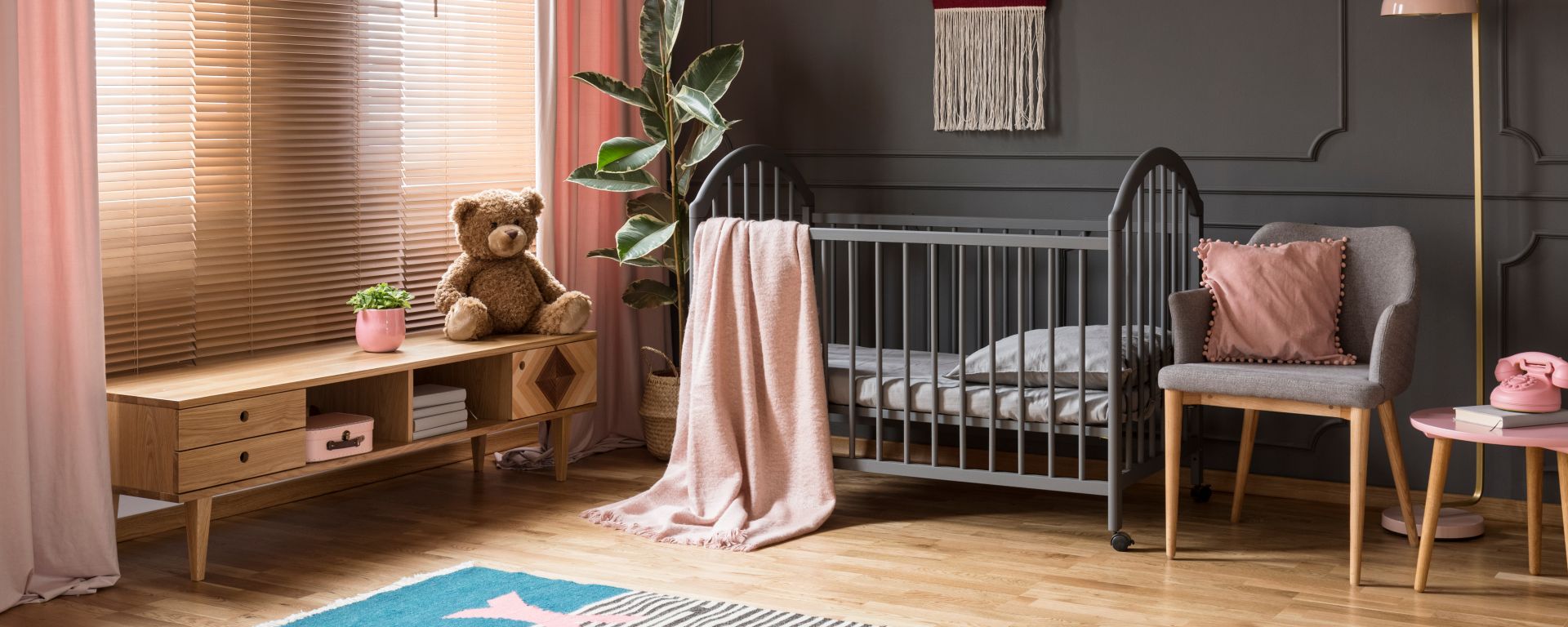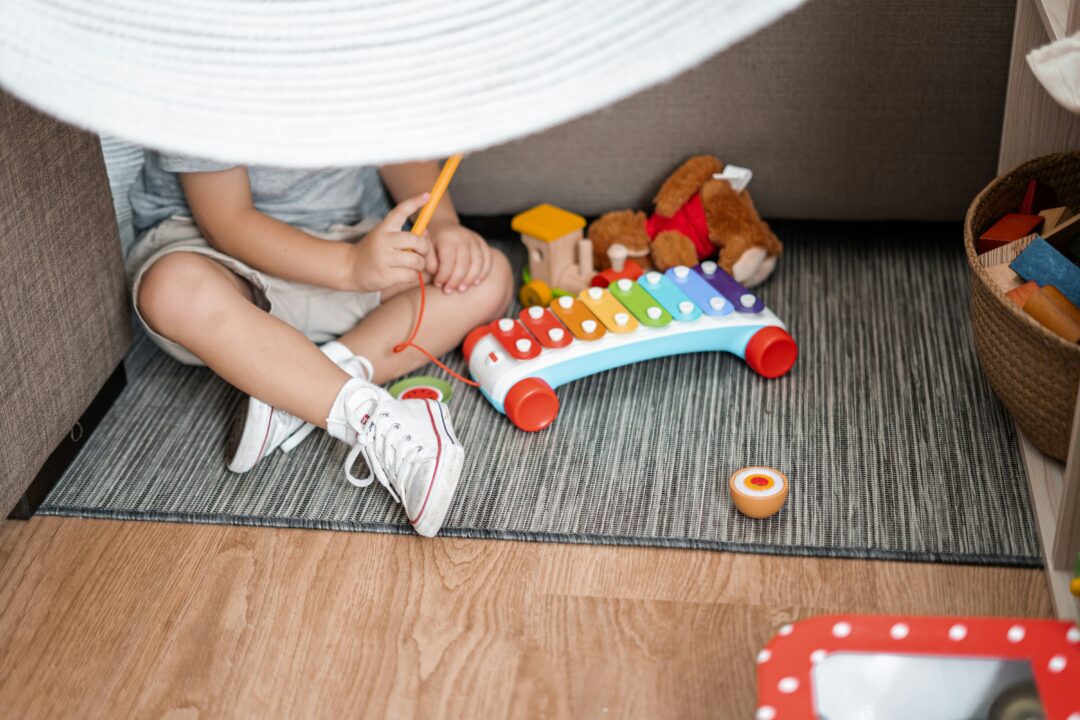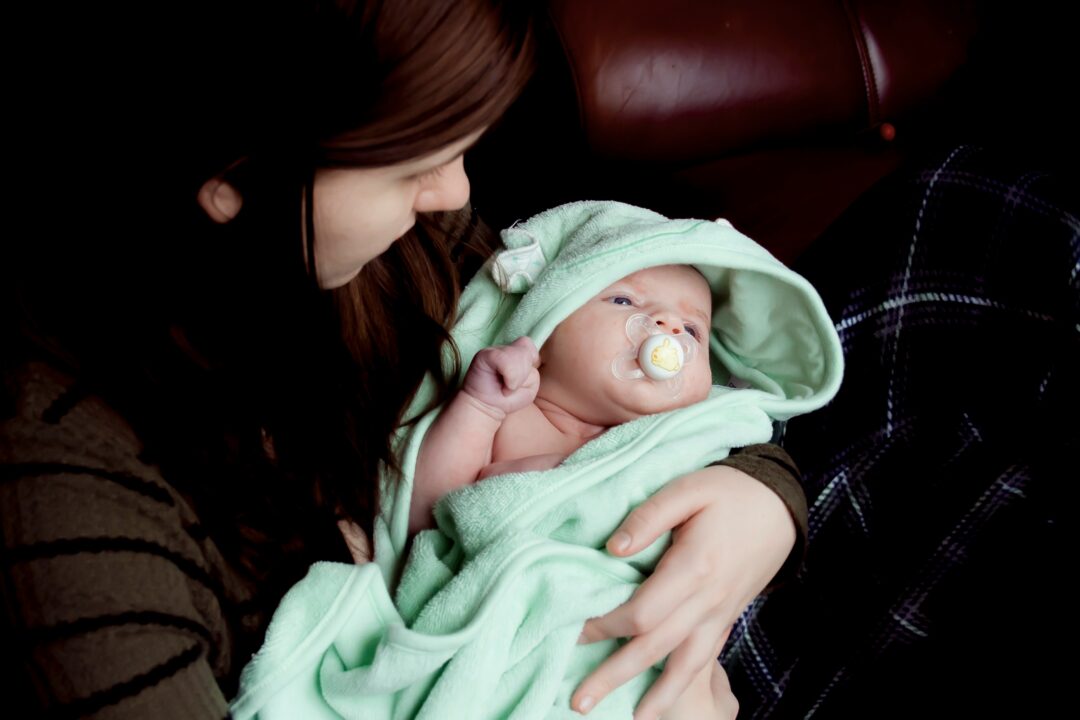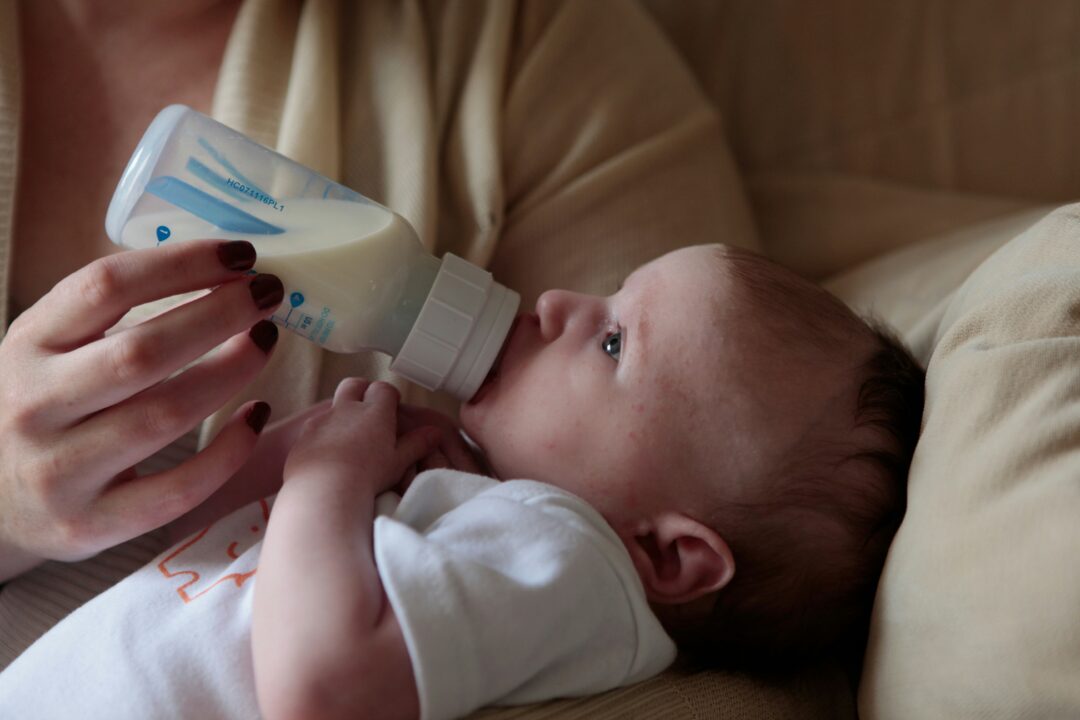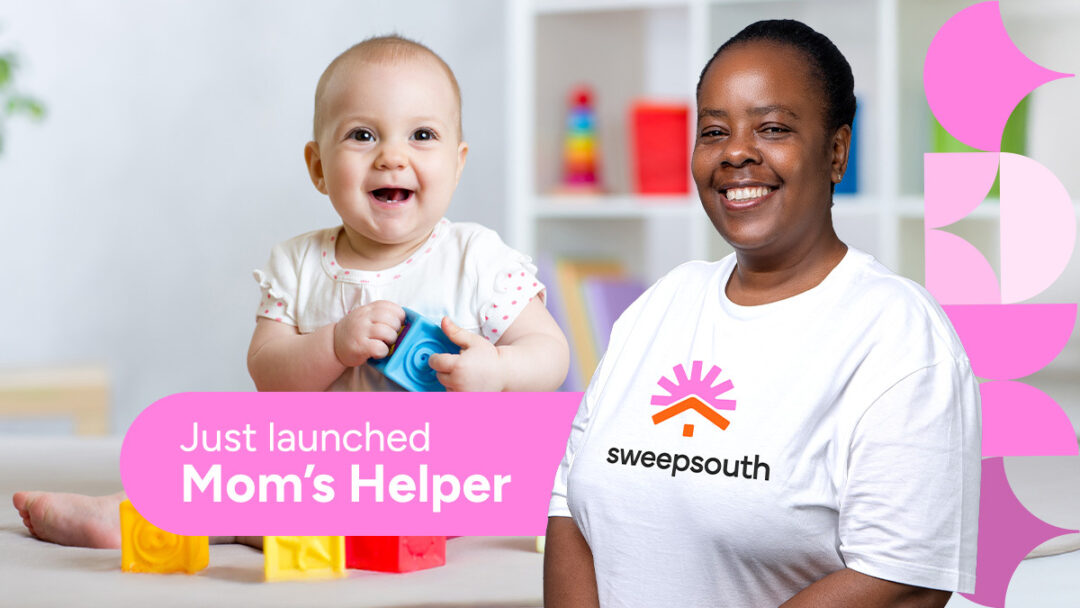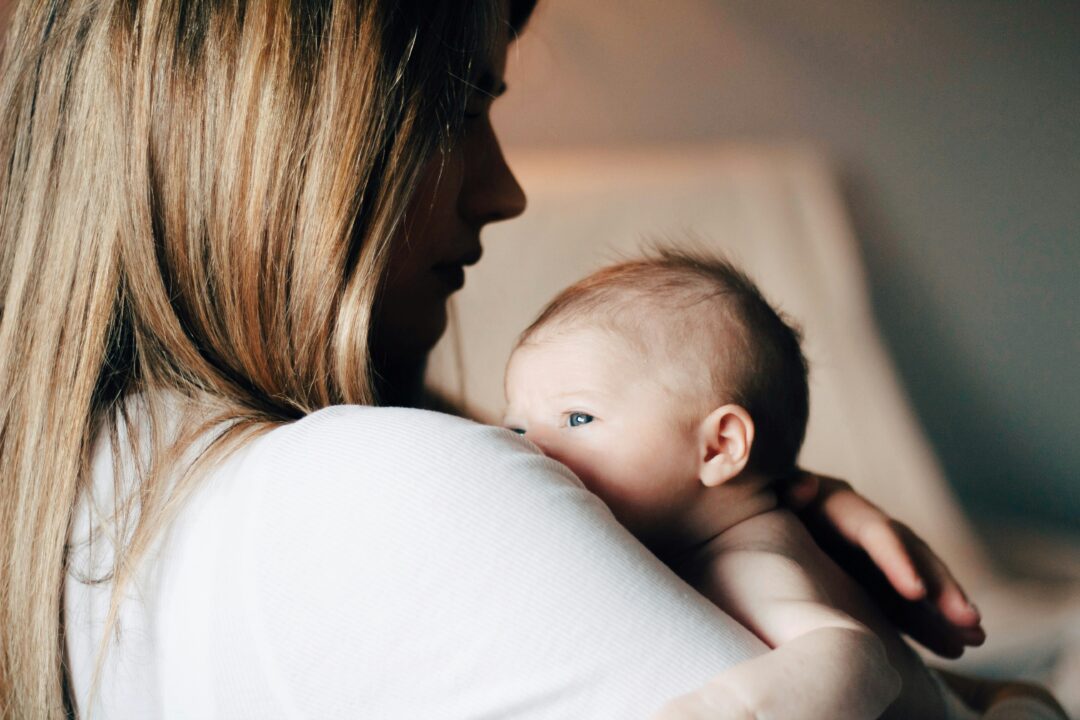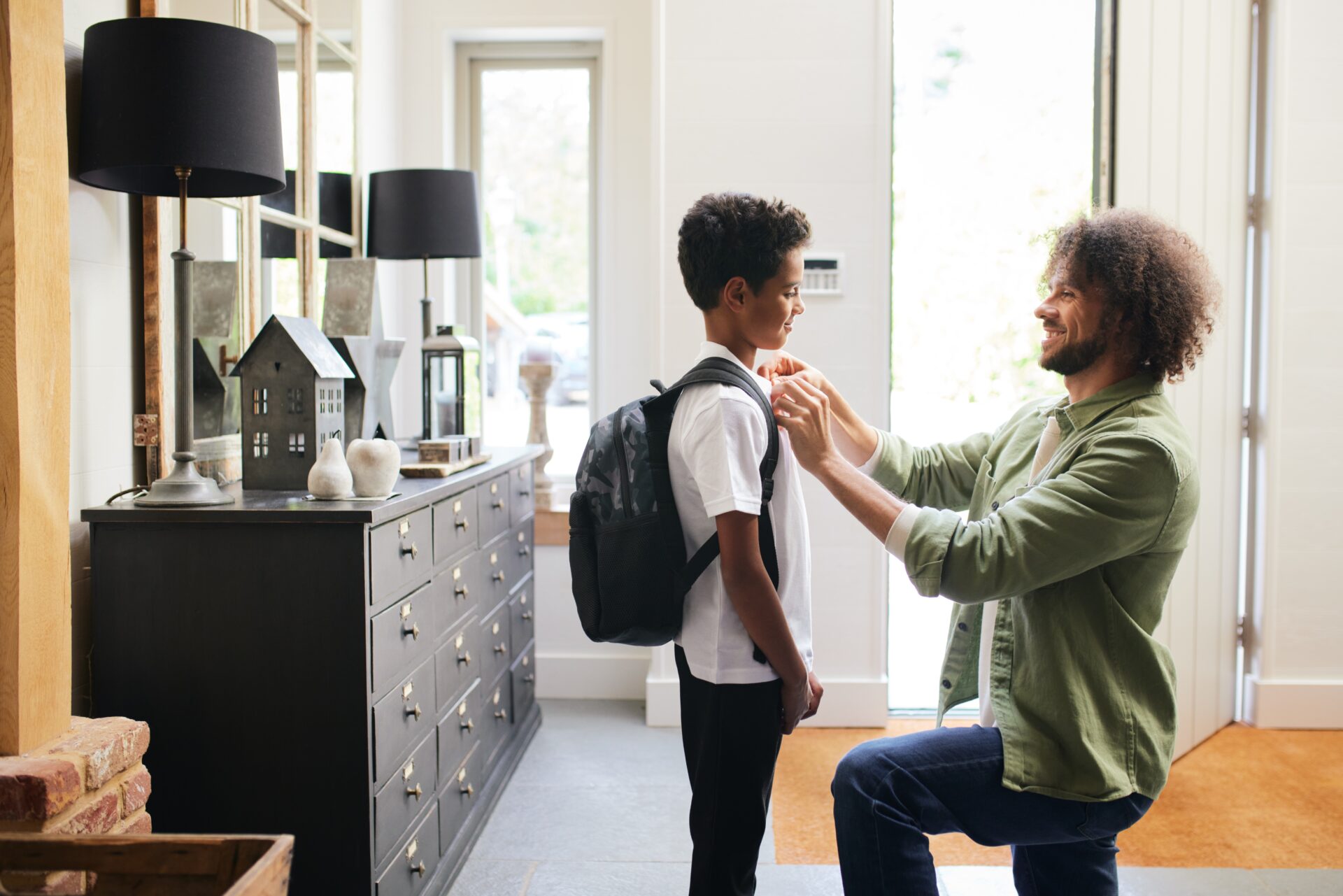Designing a nursery just adds to the excitement of a baby on the way. It’s important to be prepared as there probably won’t be much time to plan and create a nursery when your child has arrived. You may want to plan ahead with the decor as children do grow quickly. Before you know it they’ll grow into the toddler stage, so it’s important to choose a theme that can last into the future – at least 5 years. You’ll want to consider your budget and plan accordingly to ensure you don’t maximise costs. You can also find designs in decor magazines or online on Pintrest. Here are some tips and ideas for creating the perfect home nursery.
If you have a baby on the way you may want to read other parenting tips including the baby and child proofing checklist every parent needs.
Choosing Paint For The Nursery
You should first consider the type of paint you’re going to use before choosing the colour.
Matt will create a flat finish, so look for wipe-clean versions rather than traditional matt paints to keep the walls in good condition for longer. For a finish more resistant to marks and scuffs, go for paints that can deal with being scrubbed. Chalkboard paint can also be great for a child’s room, especially when they grow into toddlers. You can paint a chalkboard sized area on the wall, or simply a whole wall. Also, it’s best to look for the most durable paints for children’s rooms.
When choosing colours, they don’t have to be plain or regular traditional colours for girls and boys. Instead, choose a colour that will suit the direction of the room. For north-facing rooms, you may want to go with more inviting warmer shades, and south-facing rooms will suit cooler shades. This will enhance proportions – with light colours enhancing natural light and space, while dark colours make a room appear cosier, especially at night. Luckily, for the first years, your child won’t have an opinion about the colour of their room.
Painted walls allow for painting over in the future. This is a great way to keep your budget low. Keep in mind that the darker colours will be harder to paint in the future.
Wallpaper
A neutral paint colour will make repainting later on easier. You can also change the look of the room with different colour linens and accessories. Pale shades may be easier to pair with colourful accessories, but they are more easily marked, meaning cleaning and touching up the paint will have to be done often.
Adding Wallpaper
Wallpaper is another option for decorating and giving a nursery personality. Most children’s wallpaper is quite bold and colourful, so you don’t have to use wallpaper on all of the walls if it’s going to be too much for the room, especially if it is small. Consider using a neutral colour paint on two walls and wall paper on the other two walls.
Wallpapers can be fun too, they don’t have to be plain. You can choose patterned wallpaper including geometric designs.
Add A Mural
Murals can be an appealing alternative. They can work like a feature wall that you can make with wallpaper. Instead of just putting up more regular wallpaper rolls, you can size the design with themes like animals, birds, maps, astronomy, and more.
Wall Stickers
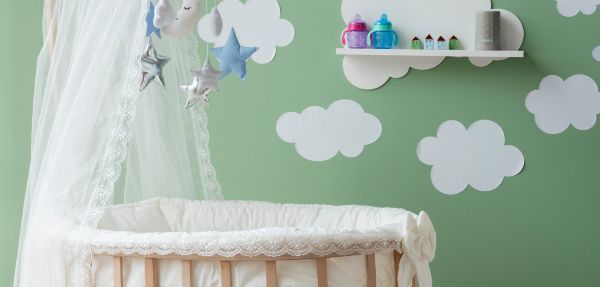
Wall stickers add some excitement to your child’s room, and they are also easy to remove when the design wears out. There are versions available for kids from nursery age to teenage years; they don’t have to be for little ones only. Stick either a single image or a group of many stickers in place, otherwise, they may look out of place.
Choose The Right Flooring
You may want to choose carpet for your child’s nursery as it is warm and more comfortable underfoot for your baby to sit on or be changed on. It will also cushion falls when they start to walk, and items won’t break so easily on them. Carpets are also good for keeping out sounds when your child is going to sleep. Make sure you know how to clean carpet stains as they can occur regularly.
Polypropylene is stain resistant and often on the market for children’s rooms, but regular fibre carpet is durable, moisture, and dirt-resistant. If you discover your child has allergies then carpet is not recommended, you may want to try one of the other flooring options below.
Vinyl Flooring
Vinyl flooring is easy to clean, good quality, hard wear, and warm. It comes in many nice colours and styles if you want the floor to be a focus of the room. There are also light shades to choose from, or even wood looking vinyl. Learn how to clean vinyl floors and remove scuffs and stains to make yours and your child’s life easier.
Laminate Flooring
Laminate flooring is a suitable option for a nursery. A good quality laminate will stand against wear and tear, and these types of floors are also easy to maintain. Knowing how to clean laminate floors will help you keep a safe and sanitary space for your child.
Hardwood
Hardwood floors are natural and easy to keep clean. Solid wood and engineered wood finishes can be sanded and refinished after a while if there are marks or scratches. This sort of flooring will look good as the years goes on and the decor or other parts of the room change.
Rugs
If you choose hardwood or laminate flooring for your child’s room, or if there are carpets you’d like to liven up, lay a rug on the floor. Flat weave and short pile rugs are the easiest to clean, and cotton and wool are the softest and most durable.
It’s important that whichever sort of rug you choose, doesn’t slip. Underlays and grips made for rugs will help to prevent accidents. Children’s room rugs come in a range of designs that may only last for a short time. In addition to theme rug designs, there are also rugs that are plain in colour and won’t clash with the wallpaper.
Curtains, Shutters, And Blinds
For most nurseries, shutters are a common choice. Sold shutters are great for keeping out daylight, which is important for your child when they nap in the afternoon. Shutters are usually made from wood, meaning they can also be painted. Slatted shutters also work well and look good, and they last for a long time.
Blinds work well too. Pick black-out blinds to block out the light from outside, or you can go for more decorative fabric blinds made with a black outlining. Venetians also help to block out light and avoid glare on window screens. Blinds that work on spring and motorised designs are made to be child safe, as well as blinds with breakaway cords. If the blinds have cords, you may want to add a safety device that keeps the cord out of the way. Remember to use the easiest and best way to clean your home blinds.
Curtains are a soft drape of fabric to a room and can add a touch of colour or pattern. Cleaning the curtains can be more time-consuming than that of non-fabric blinds or shutters. Black lining is also available on curtains but it will not completely block out all light coming in, pairing with black out blinds may help to make the room darker when required.
Lighting
Nurseries should have a source of light. Ambient light for the room can be provided from a ceiling pendant, down lights or track lights. You can hang a pendant with a nice shape or in a beautiful colour. If the room still requires additional lighting then pair it with down lights.
Try a table lamp with a dimmer switch offering different brightness for various stages. For babies and young children, a nightlight can help to provide them with a comforting glow and help you navigate around the room if you need to go into the room at night.
When they’re older, a bedside lamp or reading lamp that’s bright enough to avoid eyestrain will be helpful. Decorative lighting like fairy lights or plug in LEDs are inexpensive and an exciting way to stay current with changing styles. Be sure they’re out of reach of children.
Cot Or Cot Bed
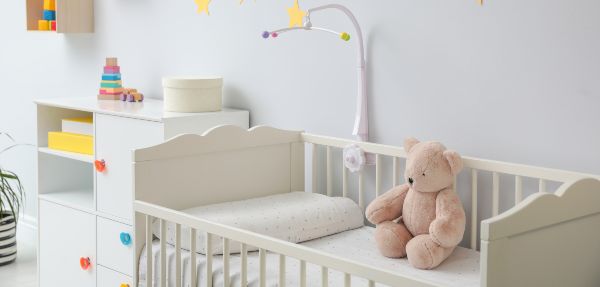
The cot is a crucial piece of furniture you will have to buy. You’ll want to ensure it’s made by a quality manufacturer or from a high quality supplier to ensure it’s safe and durable.
Other features to look out for:
- If buying the cot separately from the mattress, be sure to check the measurements, and make sure that you have the right size. A standard sized cot mattress will be a bit narrower than the size of the cot, so you may want to invest in a larger sized cot as it will last for longer.
- You may want to consider a cot with removable sides, as these are useful when your child grows into a toddler; the cot can be converted into a cot bed. They tend to be bigger than cots.
- There are cots with adjustable heights, so when your child learns how to get out of the bed it can be lowered.
- A cot with a teething rail is also a good idea to consider. The protective covering allows chewing by a teething baby with the edges of the cot showing damage.
- Wheels are a useful feature if you plan to move the cot from the nursery to another room.
When buying a cot, consider the next possible type of bed. That way, you’ll be able to choose the appropriate sized furniture for the rest of the nursery so there won’t be any need for refurbishing after changing the bed.
Toddler beds
These practical beds work well climbing in and out easily, they are also made to prevent kids from rolling out of the bed. There are usually choices of plain wood or real wood looking designs.
Extendable beds are made for toddlers, but can also be pulled out to keep up with growth, so they’ll be used for longer.
Full size single beds
Single beds will remain intact for many years, and guard rails can always be added to prevent rolling out. You may even want to consider a bed that also has a pull out underneath to save space.
Bunk Beds
These are space-saving beds for siblings who share rooms, or sleepovers. The top bunk should be used by children over 6 years old, and the mattress should be too thick to prevent falling over the barrier. There should be a fastened ladder too.
Mattresses should provide efficient support and hold up with growth. It’s important to change the mattress at least every 7 years. Always make sure it’s compatible with the bed according to size.
Other Furniture Items
- The changing table is not used for every change; sometimes it’s easier to change your baby in the living room than to go all the way to the nursery every time, so it’s a good idea to choose a changing table that can also act as storage.
- A nursing chair for feeding during the day and night is also a must have; you can choose one that’s made for feeding and looks part of the scheme.
- Shelves are more useful than cupboard space, especially for babies. But still, you’ll want to pick a design that allows you to add a rail later on.
- Maximise storage with storage boxes that can slide under the cot or changing table.
- Keep in mind that you might need somewhere to place a baby monitor too.
Conclusion
When it comes to designing or choosing items for a home nursery, it’s important to think about whether you want more toy storage or clothing storage. Adjustable shelving might be a must-have for your child’s room design, as it can be adapted for nappies and wipes, or even toys. Shelves must be unreachable by small children but accessible for adults, and safely attached to the wall.

A mixture of open and closed storage might be a good idea; it’s also ideal for having favourite items on display for every age. A sufficient amount of closed storage will allow other older items that aren’t used anymore. Chests allow sufficient toy storage, as well as clothing and bedding. There are many other options that make up the 12 kids toys organisation and storage ideas.
We hope that these methods help you when it comes to choosing furniture for your home nursery. If you’re busy planning your nursery, you may want to take a look at our home cleaning services so you don’t have to worry about cleaning.
